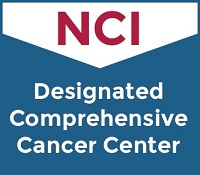Breast Imaging Center Stands Out Further with New 3D Mammography Technology
University of Maryland Rounds features clinical and research updates from the University of Maryland School of Medicine and the University of Maryland Medical Center.
Intended for physicians, Rounds contains contact information to learn more about the clinical and research advances featured in each issue. It is printed three times a year and distributed monthly via email.
The newest cutting-edge digital mammography technology, known as digital breast tomosynthesis or 3D mammography, positions the University of Maryland Medical Center's Breast Imaging Center - already designated a national Center of Excellence - among the top breast imaging centers nationwide offering patients the benefit of more accurate cancer detection and lower call-back rates for routine screenings.
The new 3D equipment was unveiled at the University of Maryland Medical Center (UMMC) in February and has already drawn interest from the scores of women who come to UMMC each year for top-level breast imaging. This new technology requires only a few extra seconds to acquire multiple, low-dose images of each breast providing clearer, sharper images than 2D technology.
In 2009, University of Maryland Breast Imaging Center was the first in Baltimore City to earn Center of Excellence status by the American College of Radiology. The Center's new 3D equipment will be joined in coming months by additional technology to further improve the precision of breast cancer diagnoses.
Similar Experience, Superior Results
The new 3D equipment doesn't significantly change how patients perceive or experience their mammograms. As with 2D mammography, women's breasts are positioned and compressed in two ways - from top-to-bottom and side-to-side - but digital breast tomosynthesis generates multiple 1 mm "slices" of each breast rather than a single image for the full breast thickness, helping radiologists better determine if anatomic structures in the breast are normal or abnormal.
The radiation dose required for 3D mammography is slightly higher than that of a standard mammogram, but still well within FDA limits. Clinically, however, 3D mammography improves cancer detection up to 41% and results in 40% fewer so-called "recalls," required to further evaluate an indeterminate screening finding.
"3D mammography makes the radiologist's interpretation more accurate," she explains. "It's also less of a burden for women, because it decreases the need for recalls, lessening the anxiety and fear they may have cancer."
Compassionate Approach Enhances Latest Technologies
About 4,500 to 5,000 women come to UMMC each year for their mammograms, and more than half who've undergone routine imaging since the 3D equipment was purchased decided to opt for the technology. The Breast Imaging Center's multidisciplinary team of clinicians is also known for its compassionate approach to women during what is often a worrisome exam.
"Breast cancer is so common that everyone knows someone who's had it," she says. "Finding someone who makes you comfortable and welcomes you in a hospital environment when you're having a stressful test is very important."
The 3D digital breast tomosynthesis technology will be quickly followed by other new technologies at the Breast Imaging Center, including contrast-enhanced mammography and ultrasound elastography. Contrast-enhanced mammography uses injected contrast material to more precisely characterize mammogram findings, making them stand out. Meanwhile, ultrasound elastography tests breast tissue for stiffness, since cancerous lesions are typically stiff and benign masses are softer.
When added to the center's complete range of breast imaging services - including mammography, ultrasound, MRI, and ultrasound-guided, stereotactic-guided and MRI guided biopsy as well as pre-operative needle localizations - the new technologies clearly demonstrate UMMC's commitment to leading-edge medicine for its patients.
To schedule a mammogram at UMMC's Breast Imaging Center, please call 410-328-3225.




